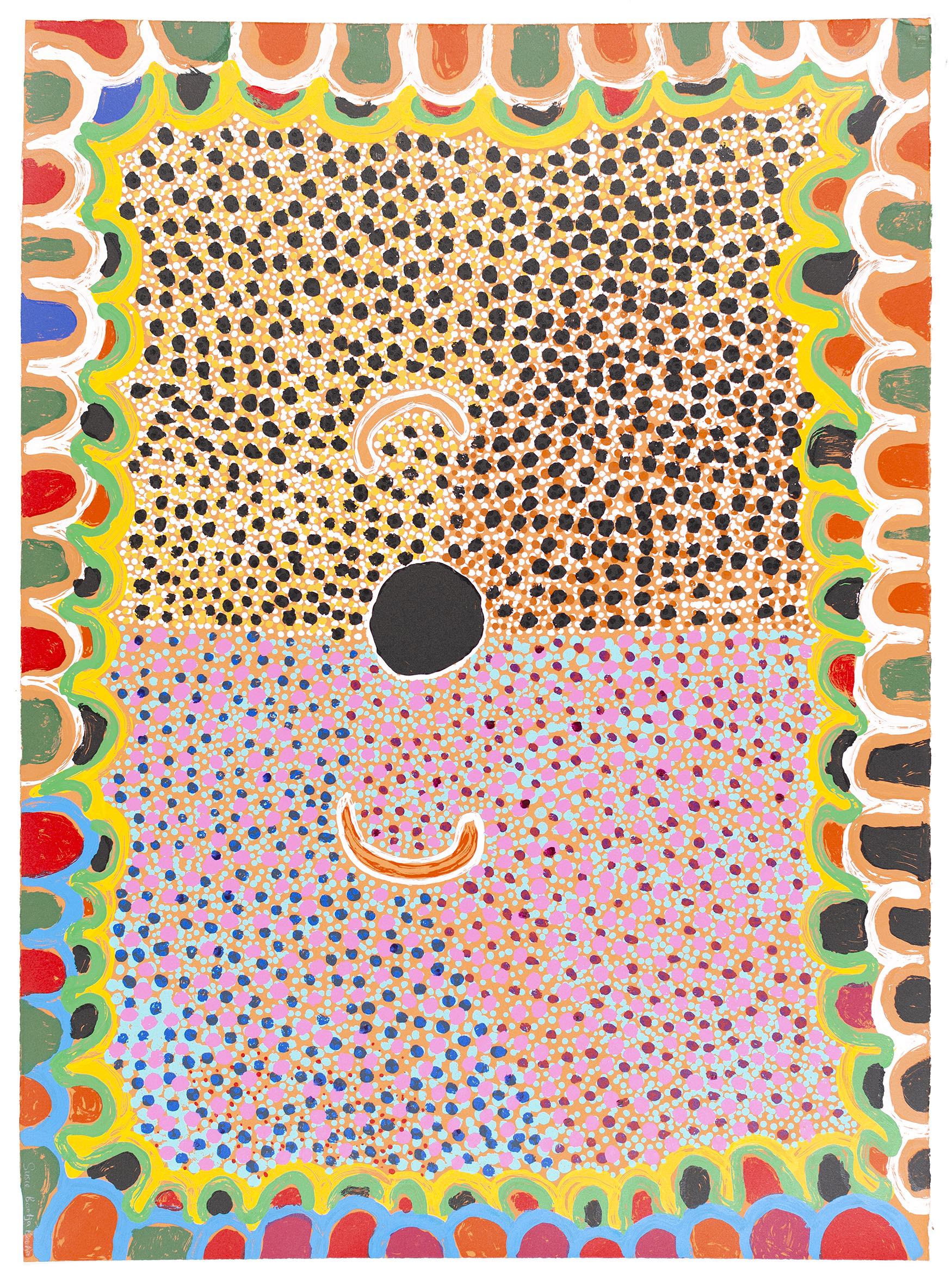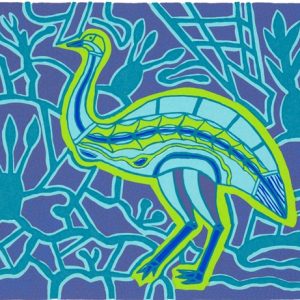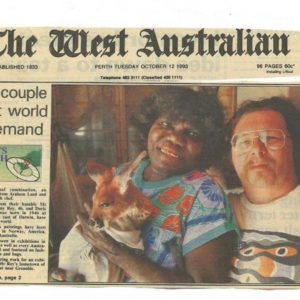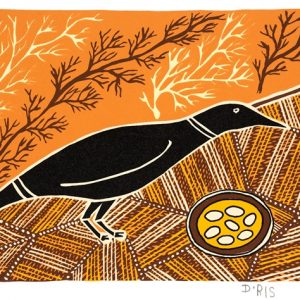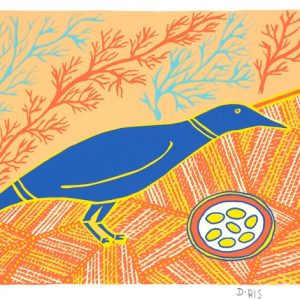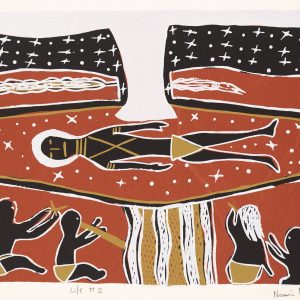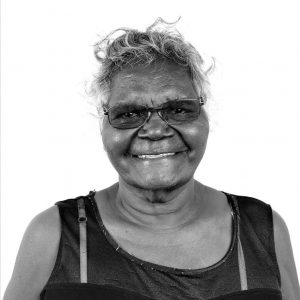Description
Details
- Type: Screenprint
- Edition: 99
- Paper: Magnani Pescia 300gsm White
- Size: 760 x 560 (image extends to edge of the paper)
- Printer: Theo Tremblay, Editions Tremblay NFP Bungendore, NSW, 2003
Story
During the Tjukurrpa (Dreamtime) a man and woman were travelling around this area which is located, at the top of the Canning Stock Route. They stopped in the country known as Kaningarra to dig a hole for water, where a permanent spring now exists. The two people are shown as the U shape. They are shown camping by the spring. Surrounding them is the abundance of tjunta, or bush onion, which can be found in this region today. The arch shapes along the edges are talis, or sand-hills, which dominate the landscape of the area. The iridescent colours reflect the sky, the white and black stones and the colours of the sand hills as the late afternoon advances toward sundown.
Artist Biography: Susie (Suzie) Napaljarri (Napaltjarri) Bootja Bootja (Boodja Boodja)
Born: c1935 – 2003
Language group: Kukatja
Susie Bootja Bootja was an Aboriginal artist from Balgo Hills in the Northern Territory of Australia. Susie Bootja Bootja is a vibrant and colourful personality who is respected for her knowledge of the law and ceremony of Kurtal (fresh water spring in WA). She tells stories about playing at the waterhole of Kangingarra (northern reaches of the Canning Stock Route) where she spent her youth. Susie walked in from the desert as a teenager to Tjumundora, one of the early mission sites.
When Susie moved to the old mission at Balgo Hills, she worked in the kitchen making bread and helping serve food to the dormitory children. There she met her first husband and had her first child, Lucy. Her husband was killed on a mustering trip due to intertribal conflict and left her a widow. Later she eloped with Mick Gill and had another six children and they remain a devoted couple today.
Susie was one of the first women painters and is well known for her initial dual use of western and traditional representations of country (hills, trees, snakes) along with lively use of bright greens, pinks and sky blues. Her innovative dotted colour fields began in 1996, and she continues to develop her style each year. Her eldest son, Matthew Gill, with Sister Alice Dempsey from the St John’s Adult Education Centre, started up the Art Centre in Balgo in 1985.
Susie Bootja Bootja then produced a profusion of paintings that are filled with her exuberant personality and her joy for life. She has travelled widely with her art, including Sydney, Melbourne, Perth, Darwin and Kununurra. Susie also prides herself on her ability to sing both in English and Kukatja, as well as her ceremonial dancing. She was also a keen and knowledgeable hunter.
Individual Exhibitions
2002, Raft Artspace, Darwin
Collections
Morven Estate
Collection Araluen Centre
Flinders University Art Museum Collection
The Holmes a Court Collection
Kelton Collection, USA
Kluge-Ruhe Collection, USA
Ganter Myer Collection
ArtBank

